Configuring Postman
This guide provides comprehensive instructions for configuring Postman to seamlessly work with the Admin API collection. Postman is an invaluable tool for API management, and this guide ensures that you can effectively utilize the Admin APIs within the Postman environment.
These straightforward steps will guide you through the process of effectively working with the Admin API collection in Postman:
Configuring Postman
Step 1: Downloading and Installing Postman
If you don't already have Postman, you can download and install it from here.
In case that you have Postman installed, please ensure that it is upgraded to the latest version (10.15+).
Step 2: Downloading the Admin API Swagger
In the Management Console, go to Settings > Admin API and click on Download Swagger. This way you obtain the AdminApiSwagger json file.

Step 3: Importing the Admin API Collection
To import the Admin API collection, follow these steps:
- Navigate to My Workspace.

- In the workspace sidebar, click on Import.
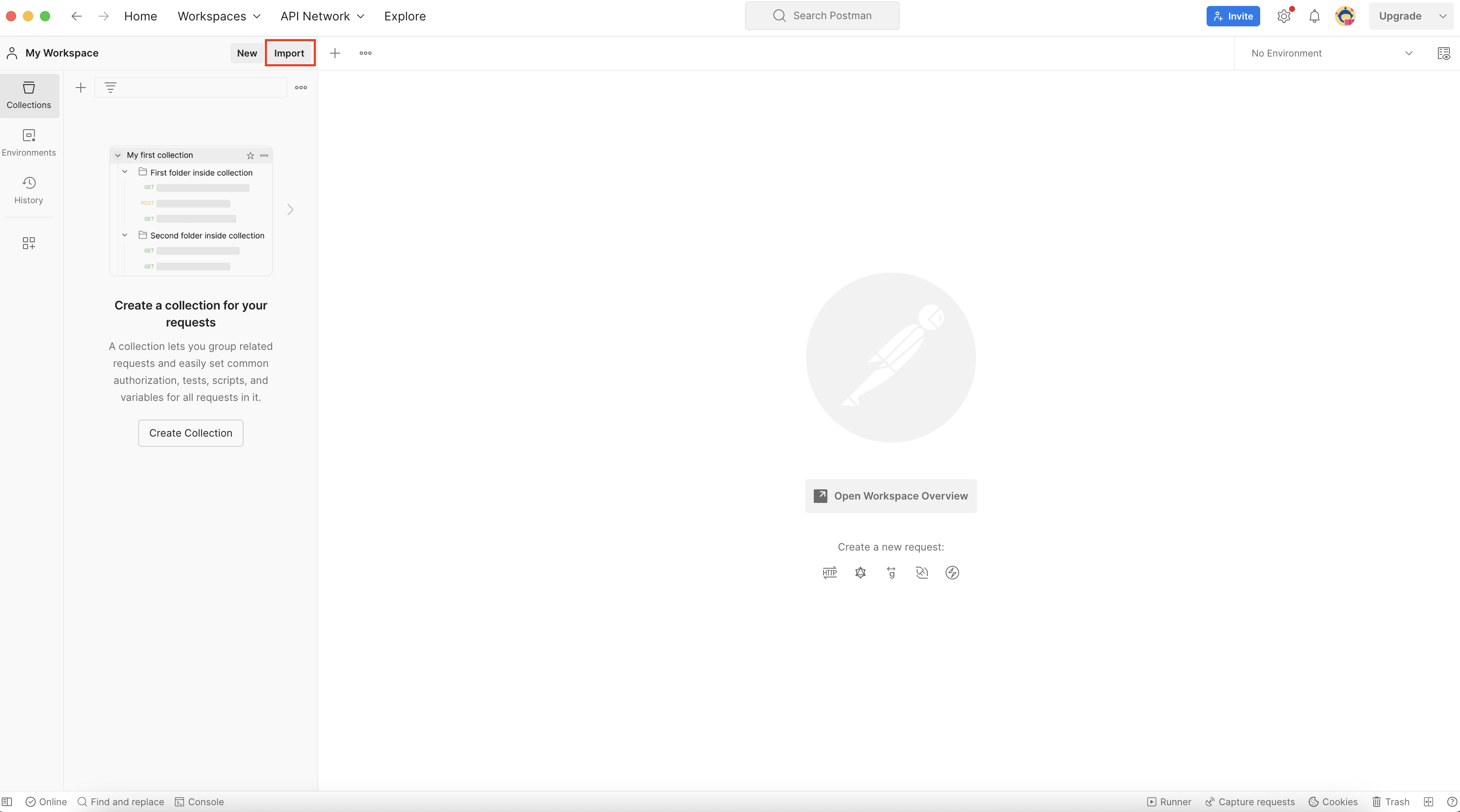
- Drag and drop the AdminApiSwagger json file into the import window.
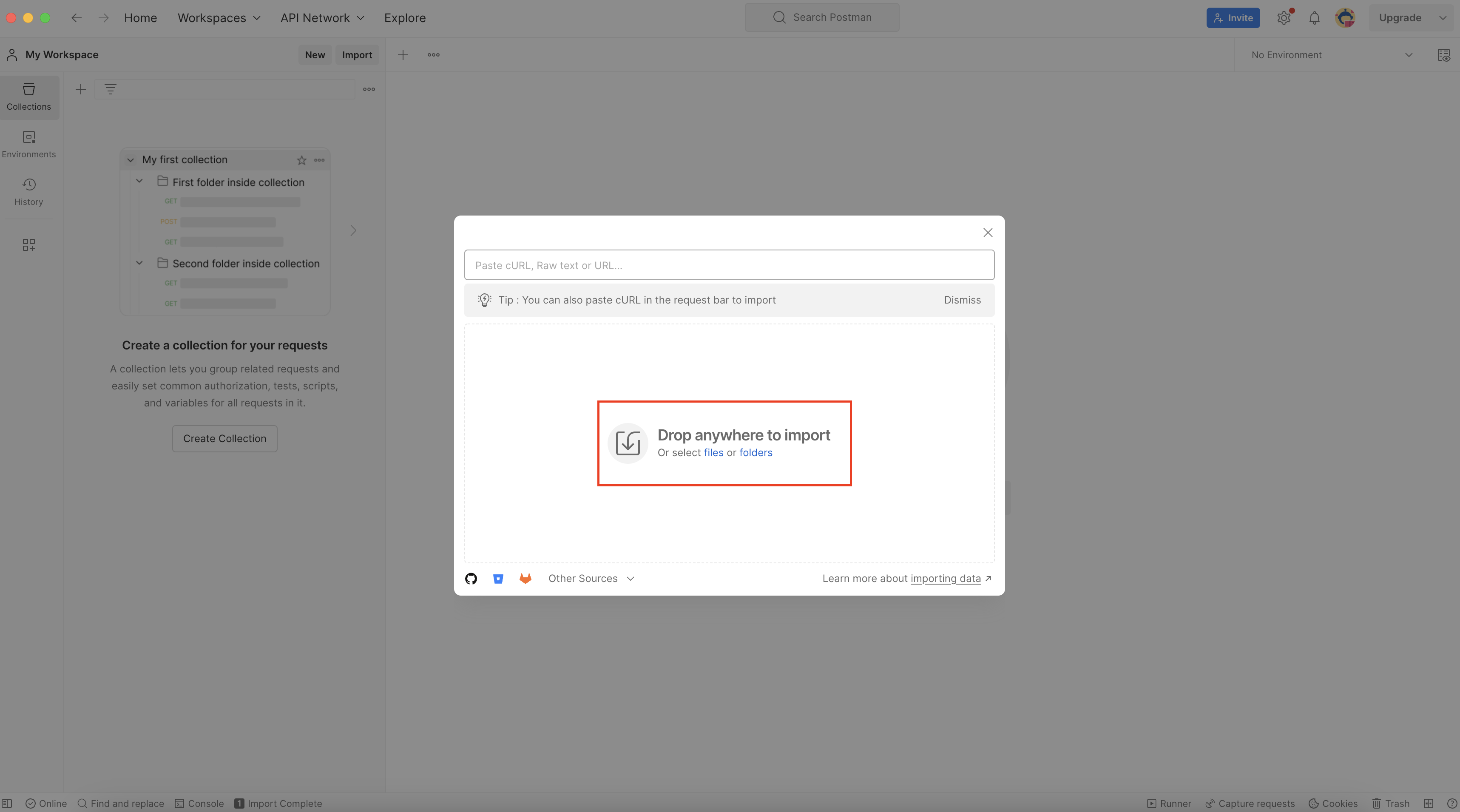
- Click on Import.
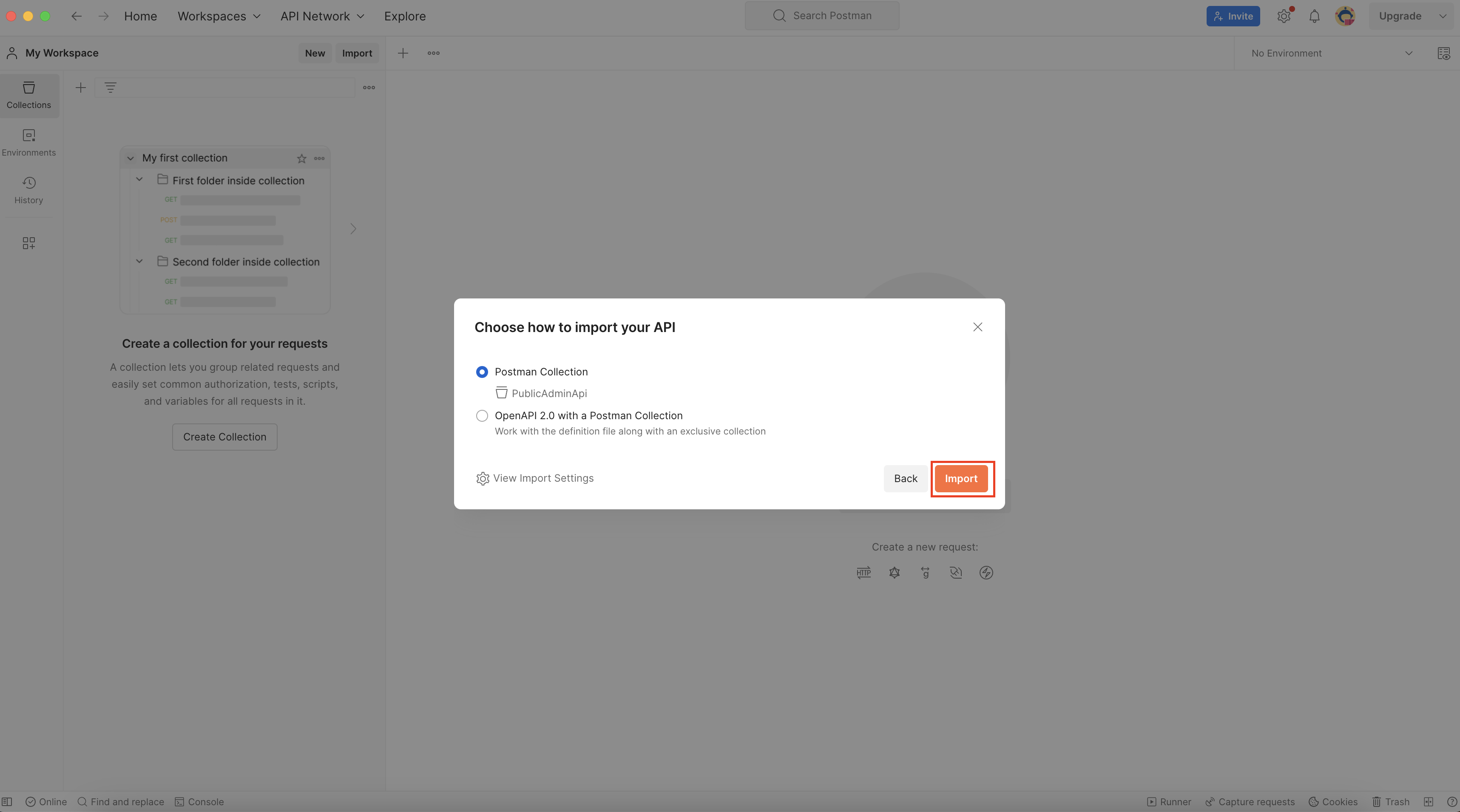
- In the workspace sidebar, now you should see the PublicAdminAPI collection.
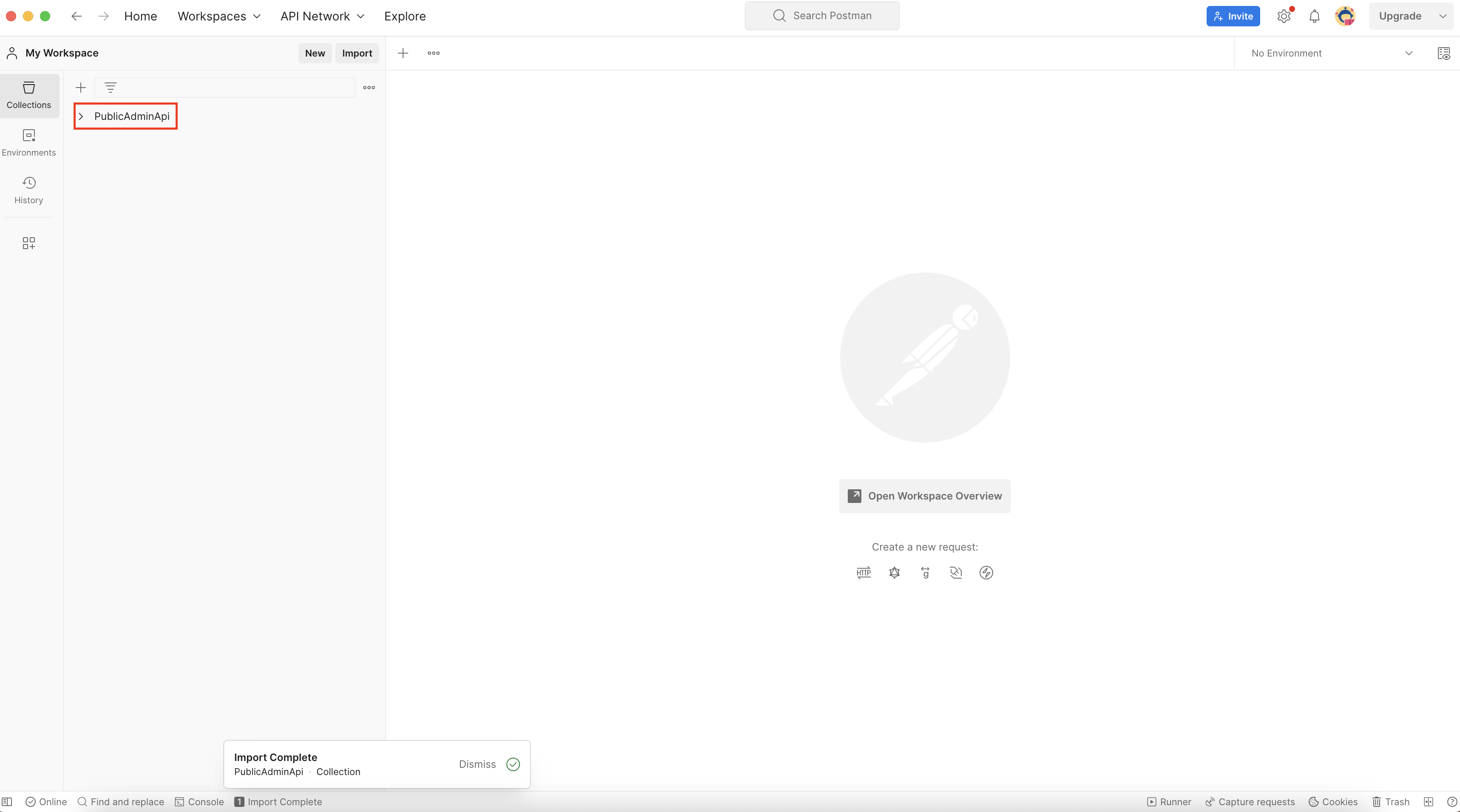
Step 4: Obtaining Admin API Token
To obtain the Admin API token, refer to the guide here.
Step 5: Setting the Management PublicAdminAPI Collection Environment
- Click on the PublicAdminAPI collection in the sidebar and select the Authentication tab.
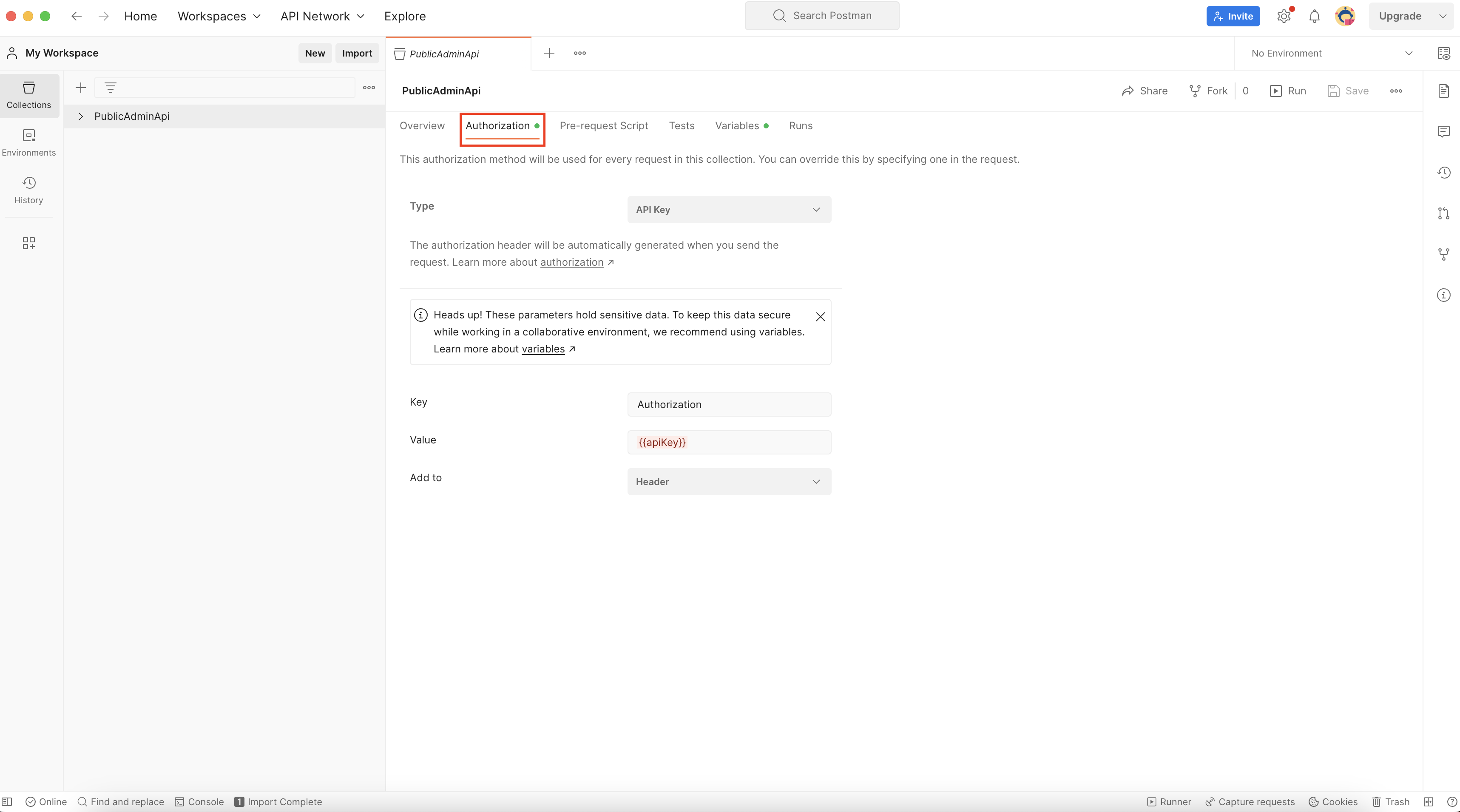
- Set the Type to "Bearer Token."
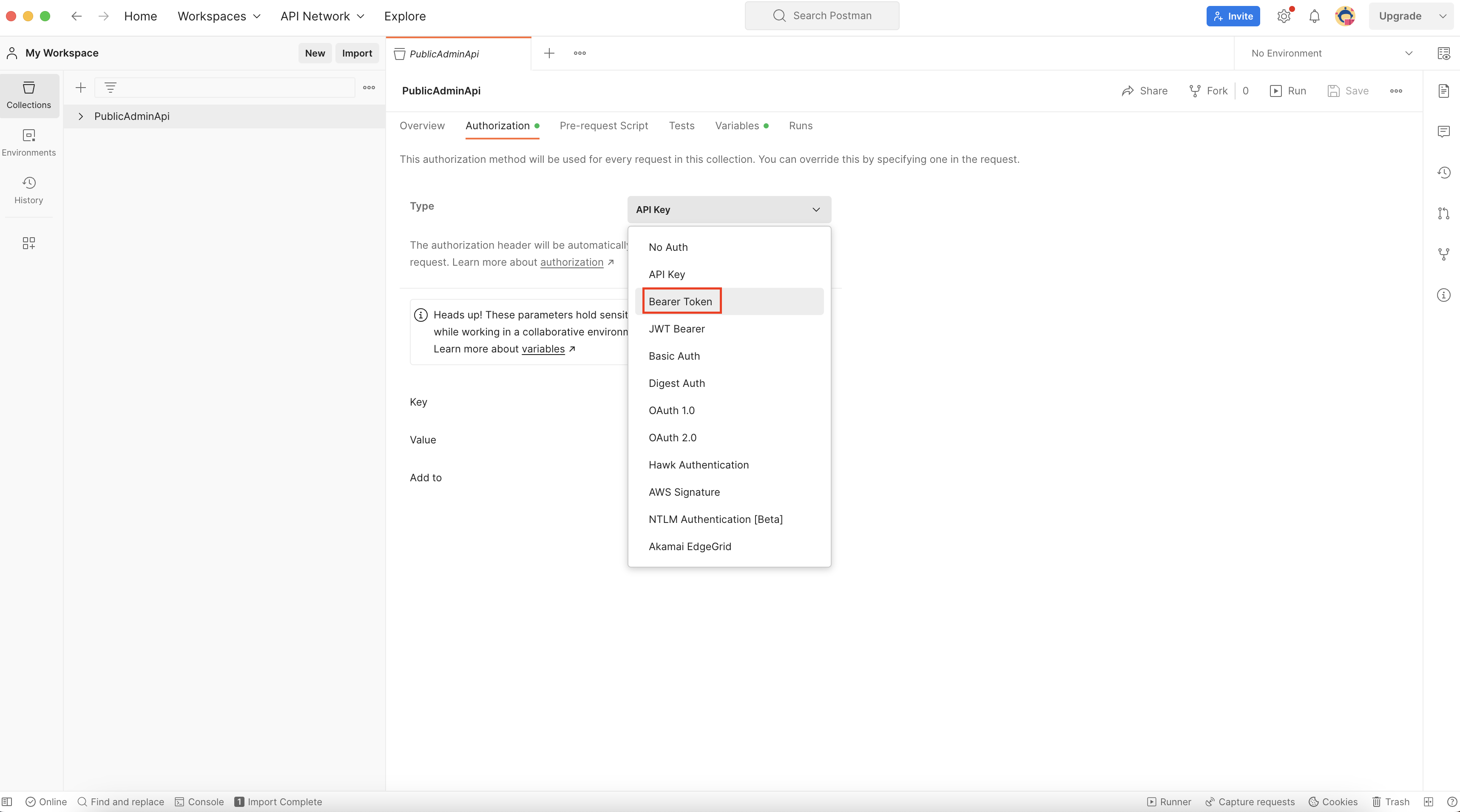
Select Bearer Token as the authorization type
- Paste the Admin API token you obtained and click on Save.
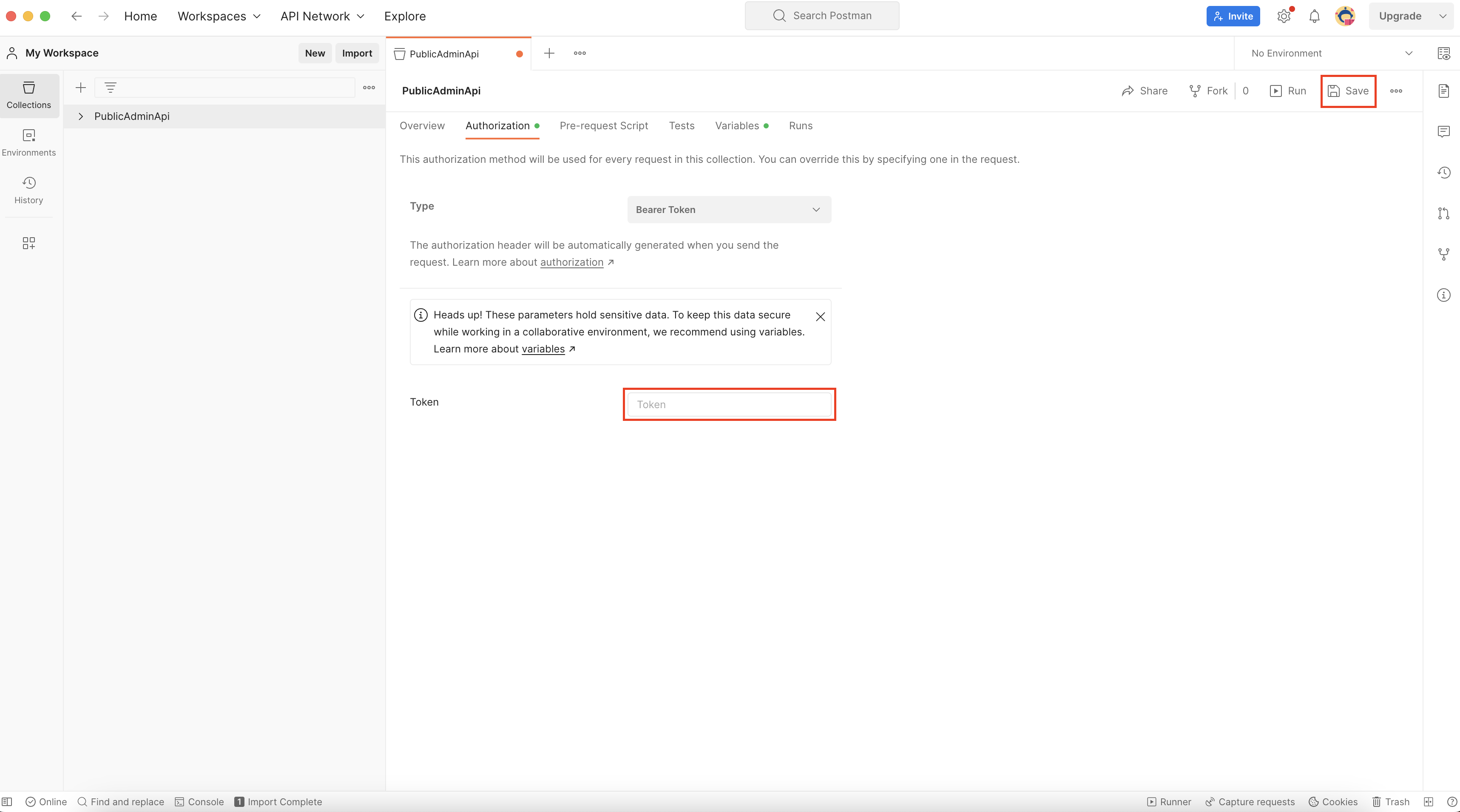
Paste the API Token value you obtained in the Admin API page in the Management Console
Making API Calls
Step 1: Select the Desired API Call
Choose the specific API call you need from the available options.
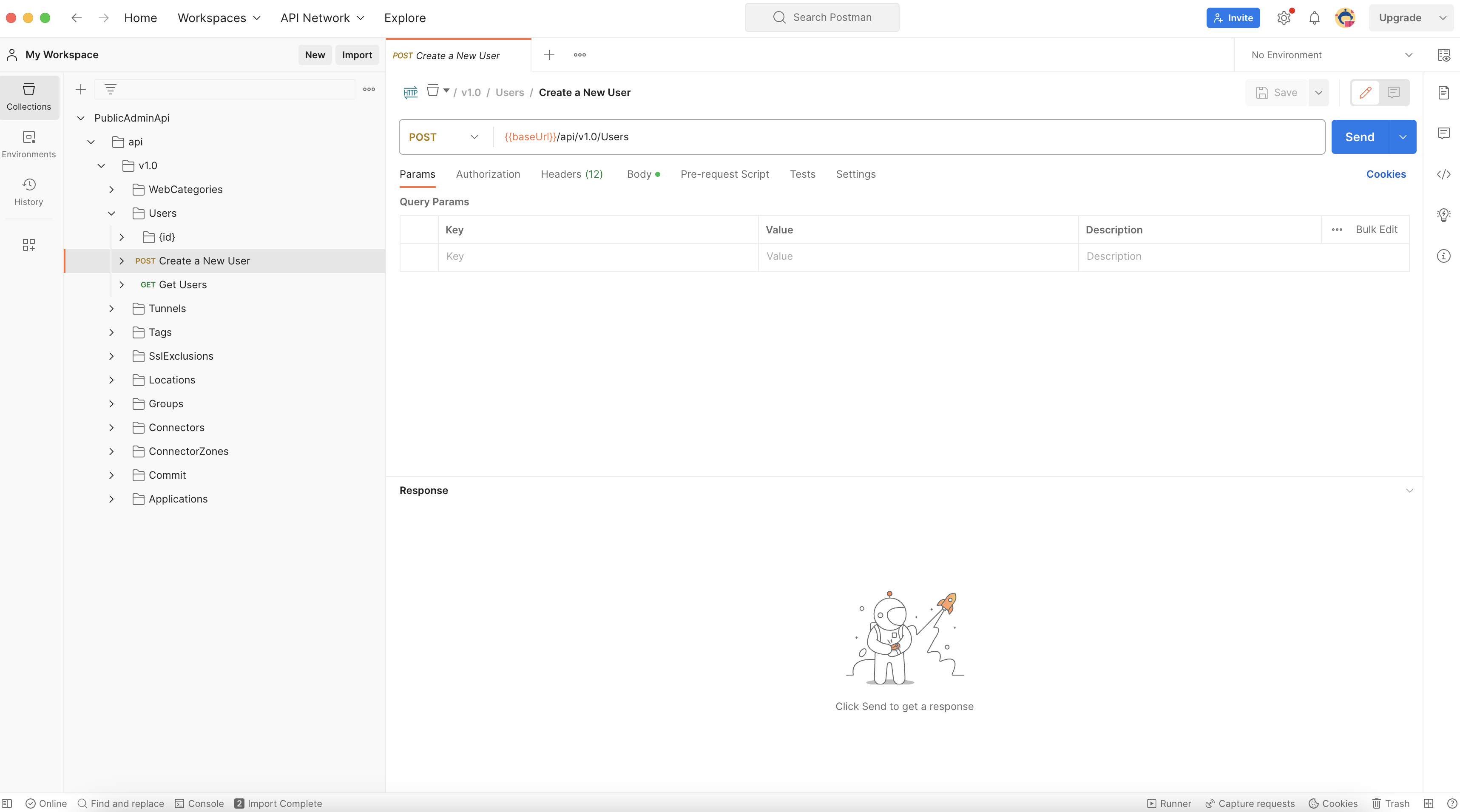
Step 2: Configure Parameters (if applicable)
In the Params tab, configure any necessary parameters required for your API call as needed.
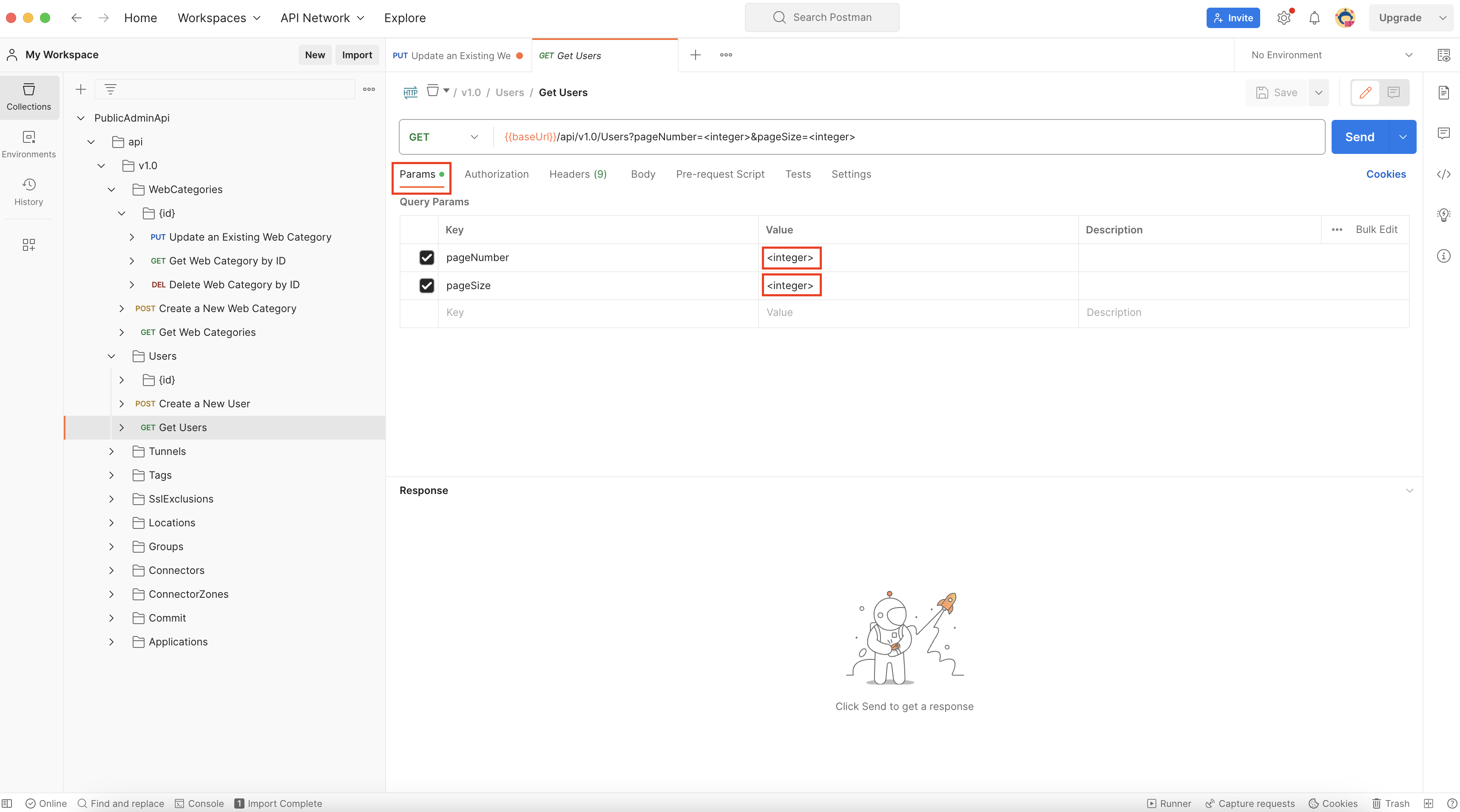
PageNumber and PageSize are commonly used params for GET ALL API requests. You can start with pageNumber=1 and pageSize=100 for an initial configuration

Id is a commonly used params for POST and GET API requests - for getting information and updating a specific object
Step 3: Define Request Body (For POST / PUT Requests)
For POST or PUT requests, navigate to the Body tab and specify the JSON request body as required.
Tip
Simplify the process by copying the JSON request body example from the relevant documentation guide and then customize it by replacing the values as needed.
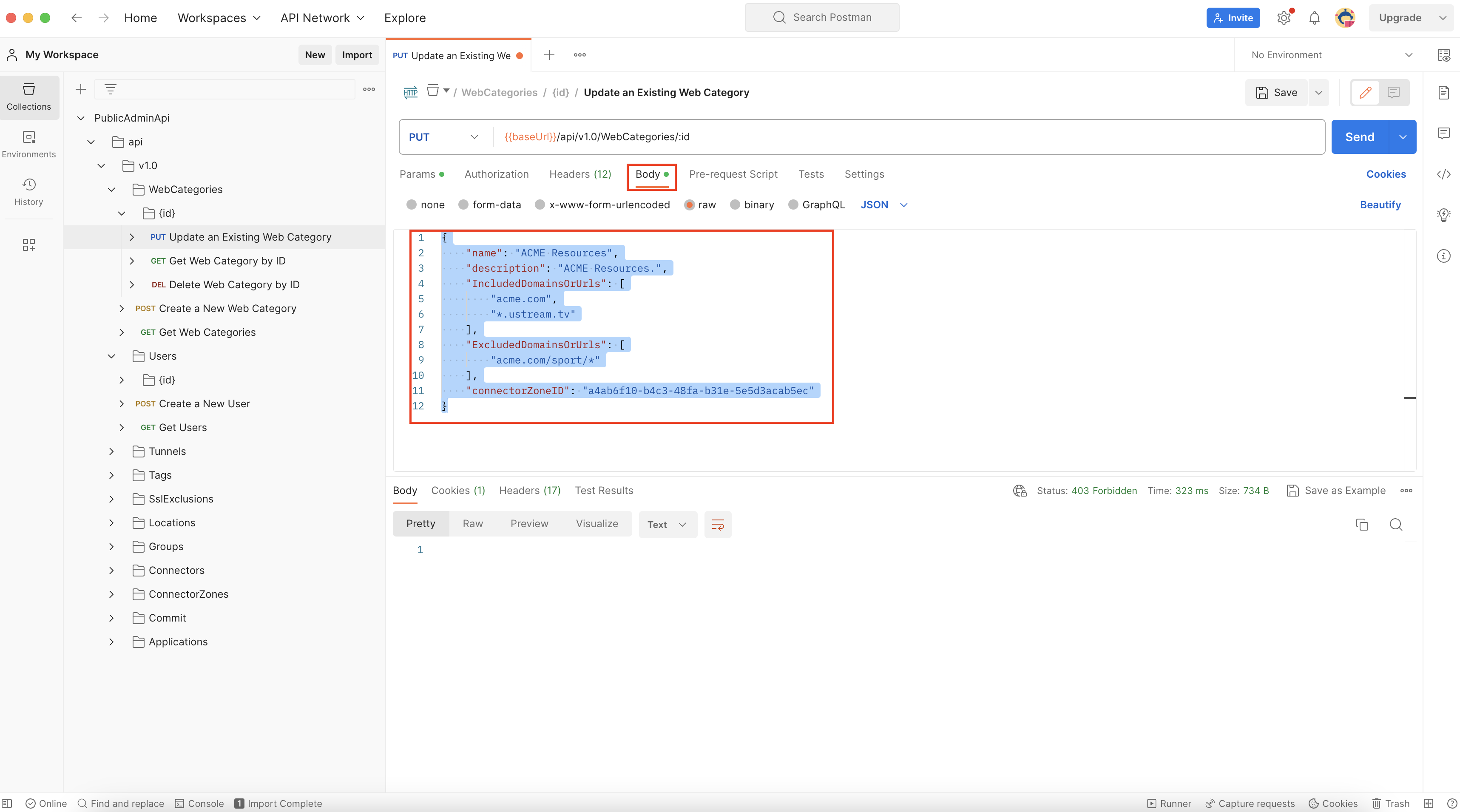
Paste the request JSON in the request body
Step 4: Send the Request
Click on Send.
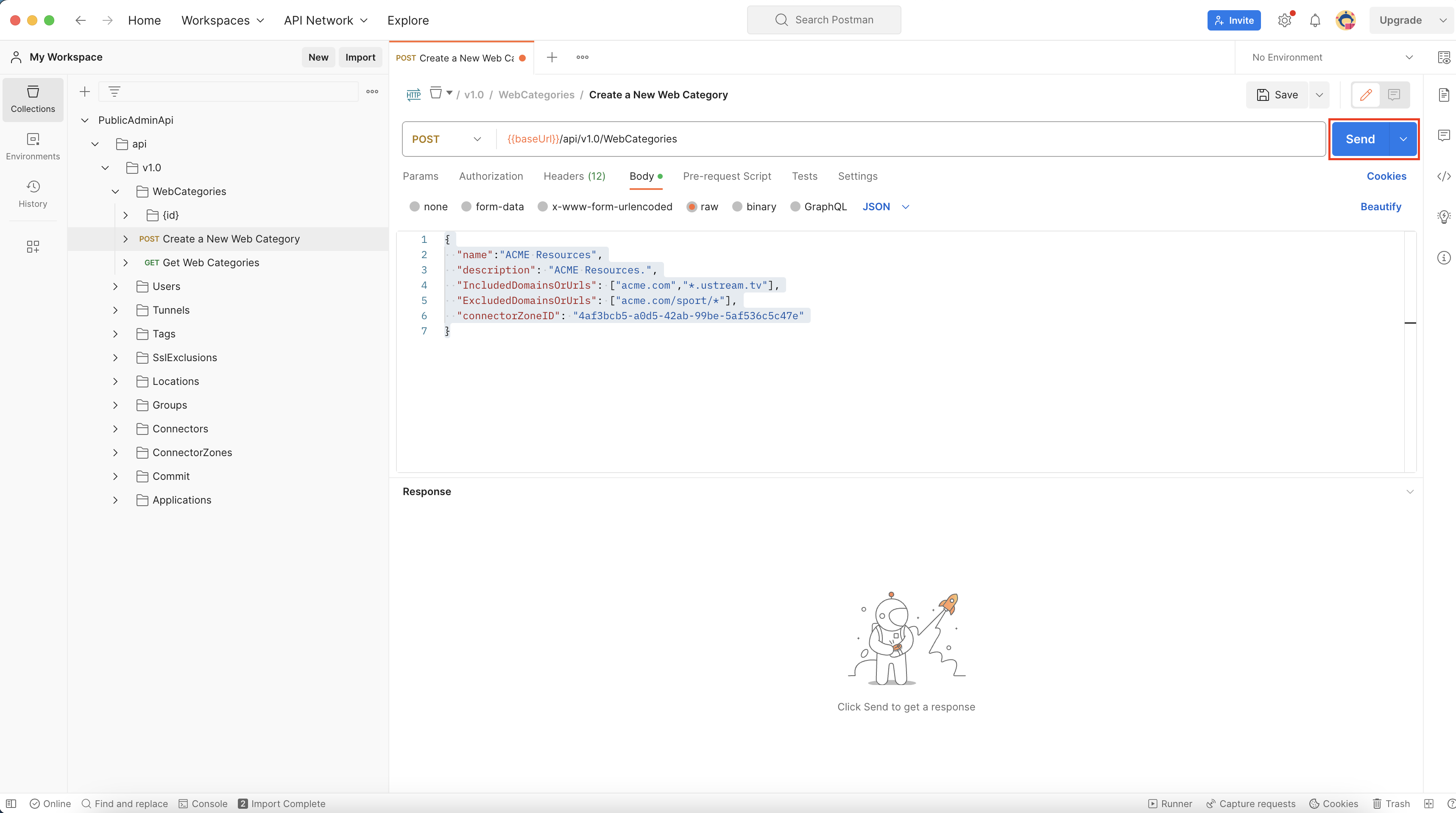
Step 5: View the Response
When receiving a response, you can find the following information:
- Status Code: Located in the header of the lower window.
- The Response Body (If exists): Accessible within the Body tab of the lower window.
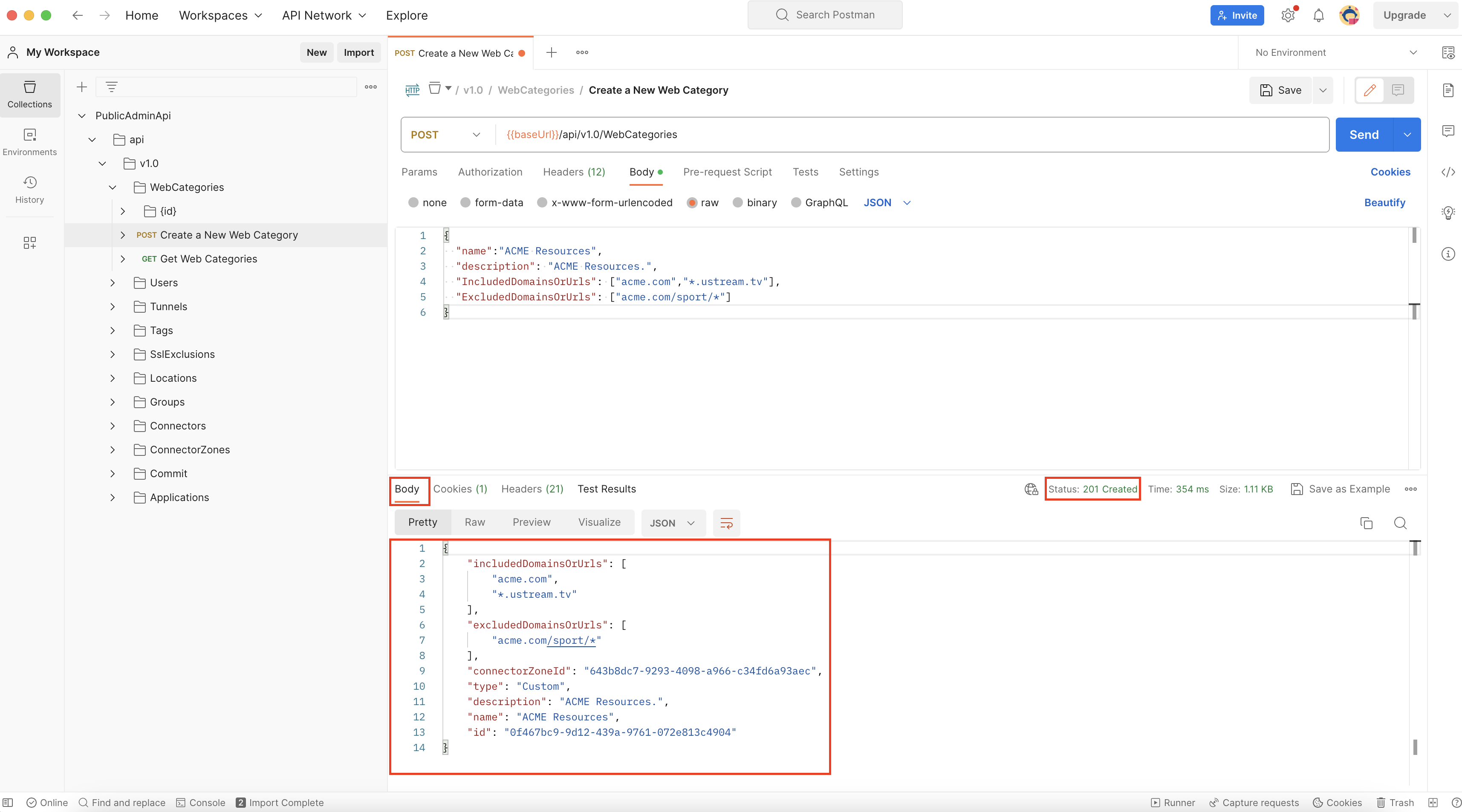
Updated about 2 years ago
